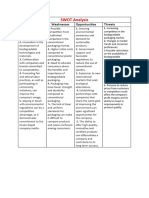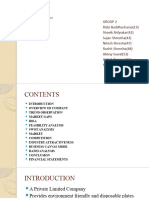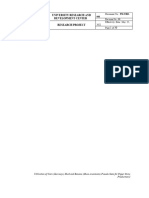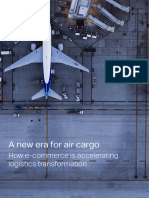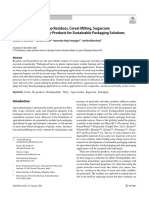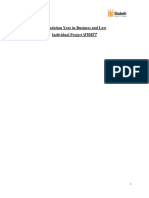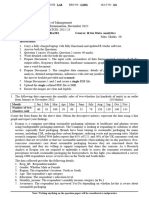0% found this document useful (0 votes)
18 views15 pagesISM Assignment Final
Biodegradable Packaging Marketing (BPM) is a startup aimed at promoting eco-friendly packaging solutions in response to rising environmental concerns and regulatory pressures. The company focuses on strategic marketing consultancy for manufacturers of biodegradable packaging, utilizing innovative strategies to position these products as the preferred choice across various industries. By leveraging differentiation and sustainability, BPM seeks to establish itself as a leader in the biodegradable packaging market while addressing the significant gap in sustainable alternatives to conventional plastics.
Uploaded by
cpqcjbq9rkCopyright
© © All Rights Reserved
We take content rights seriously. If you suspect this is your content, claim it here.
Available Formats
Download as DOCX, PDF, TXT or read online on Scribd
0% found this document useful (0 votes)
18 views15 pagesISM Assignment Final
Biodegradable Packaging Marketing (BPM) is a startup aimed at promoting eco-friendly packaging solutions in response to rising environmental concerns and regulatory pressures. The company focuses on strategic marketing consultancy for manufacturers of biodegradable packaging, utilizing innovative strategies to position these products as the preferred choice across various industries. By leveraging differentiation and sustainability, BPM seeks to establish itself as a leader in the biodegradable packaging market while addressing the significant gap in sustainable alternatives to conventional plastics.
Uploaded by
cpqcjbq9rkCopyright
© © All Rights Reserved
We take content rights seriously. If you suspect this is your content, claim it here.
Available Formats
Download as DOCX, PDF, TXT or read online on Scribd
/ 15











